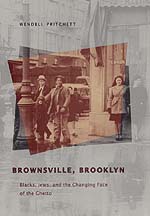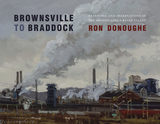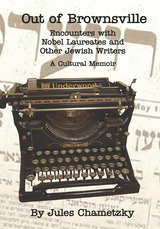3 books about Brownsville

Brownsville, Brooklyn
Blacks, Jews, and the Changing Face of the Ghetto
Wendell E. Pritchett
University of Chicago Press, 2001
From its founding in the late 1800s through the 1950s, Brownsville, a section of eastern Brooklyn, was a white, predominantly Jewish, working-class neighborhood. The famous New York district nurtured the aspirations of thousands of upwardly mobile Americans while the infamous gangsters of Murder, Incorporated controlled its streets. But during the 1960s, Brownsville was stigmatized as a black and Latino ghetto, a neighborhood with one of the city's highest crime rates. Home to the largest concentration of public housing units in the city, Brownsville came to be viewed as emblematic of urban decline. And yet, at the same time, the neighborhood still supported a wide variety of grass-roots movements for social change.
The story of these two different, but in many ways similar, Brownsvilles is compellingly told in this probing new work. Focusing on the interaction of Brownsville residents with New York's political and institutional elites, Wendell Pritchett shows how the profound economic and social changes of post-World War II America affected the area. He covers a number of pivotal episodes in Brownsville's history as well: the rise and fall of interracial organizations, the struggles to deal with deteriorating housing, and the battles over local schools that culminated in the famous 1968 Teachers Strike. Far from just a cautionary tale of failed policies and institutional neglect, the story of Brownsville's transformation, he finds, is one of mutual struggle and frustrated cooperation among whites, blacks, and Latinos.
Ultimately, Brownsville, Brooklyn reminds us how working-class neighborhoods have played, and continue to play, a central role in American history. It is a story that needs to be read by all those concerned with the many challenges facing America's cities today.
The story of these two different, but in many ways similar, Brownsvilles is compellingly told in this probing new work. Focusing on the interaction of Brownsville residents with New York's political and institutional elites, Wendell Pritchett shows how the profound economic and social changes of post-World War II America affected the area. He covers a number of pivotal episodes in Brownsville's history as well: the rise and fall of interracial organizations, the struggles to deal with deteriorating housing, and the battles over local schools that culminated in the famous 1968 Teachers Strike. Far from just a cautionary tale of failed policies and institutional neglect, the story of Brownsville's transformation, he finds, is one of mutual struggle and frustrated cooperation among whites, blacks, and Latinos.
Ultimately, Brownsville, Brooklyn reminds us how working-class neighborhoods have played, and continue to play, a central role in American history. It is a story that needs to be read by all those concerned with the many challenges facing America's cities today.
[more]

Brownsville to Braddock
Paintings and Observations of the Monongahela River Valley
Ron Donoughe
University of Pittsburgh Press, 2021
The Monongahela River Valley in Southwestern Pennsylvania is steeped with a rich industrial history. Starting with iron, brass, tin, and glass production, the river towns—from Brownsville to Braddock—ultimately helped make Pittsburgh the one-time steelmaking capital of the world. With this industrial legacy in mind, artist Ron Donoughe set out to document the small towns in this region, one painting at a time. Over a twelve-month period, he explored the forgotten towns of Brownsville, California, Donora, Charleroi, Monessen, Monongahela, Clairton, Duquesne, McKeesport, Braddock, and the Monongahela River itself. Brownsville to Braddock provides key insight on a forty-mile stretch of river towns. The post-industrial economy led to a decline in manufacturing, and with it, substantial job losses. These towns face many significant challenges, yet there is still beauty to be found. Donoughe finds it as he paints the human spirit through the mills, factories, parks, and homes. The people he meets share their stories of family joy and sorrows, along with a genuine love for the area they call the “Mon Valley.”
[more]

Out of Brownsville
Encounters with Nobel Laureates and Other Jewish Writers: A Cultural Memoir
Jules Chametzky
University of Massachusetts Press, 2013
In this collection of literary portraits, Jules Chametzky shares his recollections of more than forty notable Jewish writers, from Alfred Kazin to Isaac Bashevis Singer, Grace Paley, Saul Bellow, Irving Howe, Cynthia Ozick, Leslie Fiedler, Tillie Olsen, Adrienne Rich, Allen Ginsberg, Joseph Brodsky, and Amos Oz—to name a few. Also included are cameo appearances by non-Jewish authors, such as James Baldwin, Amiri Baraka, and Jose Yglesias. Not only do these various writers emerge as interesting and often complicated human beings, but Chametzky reveals himself to be a warm and gracious storyteller.
[more]
READERS
Browse our collection.
PUBLISHERS
See BiblioVault's publisher services.
STUDENT SERVICES
Files for college accessibility offices.
UChicago Accessibility Resources
home | accessibility | search | about | contact us
BiblioVault ® 2001 - 2024
The University of Chicago Press









